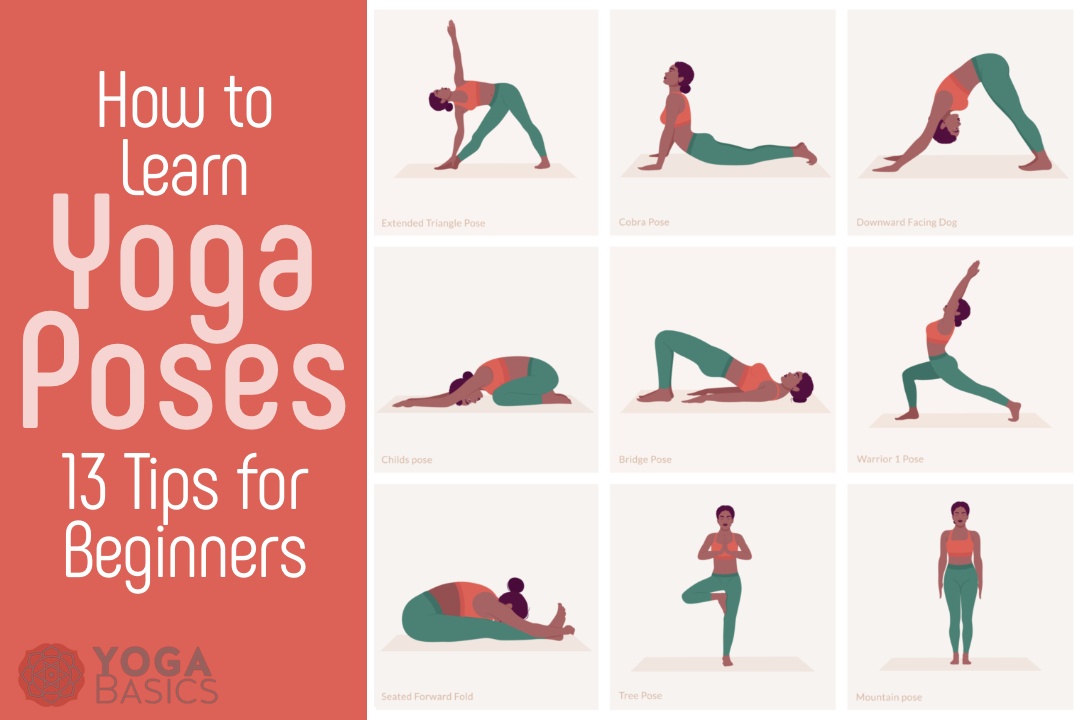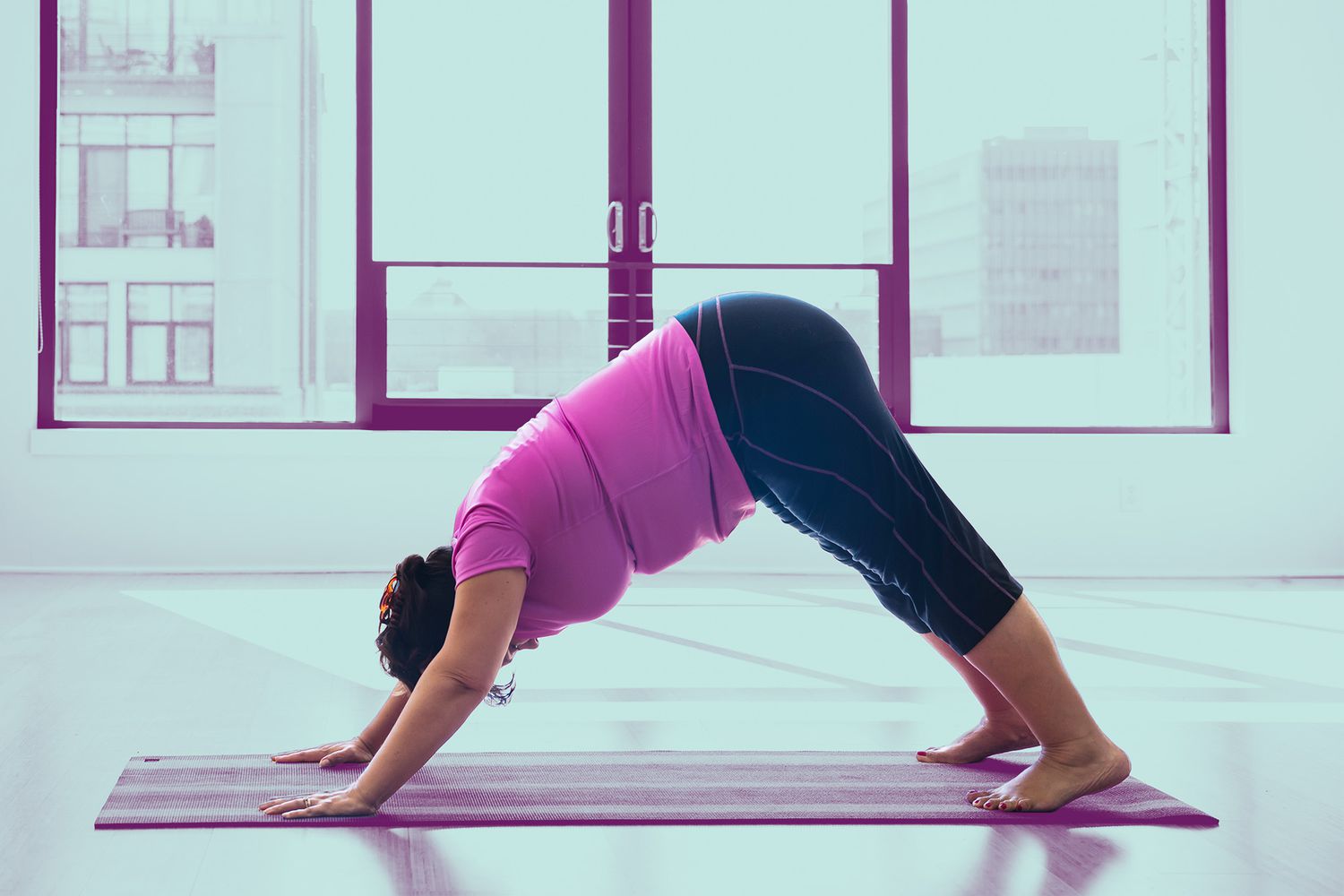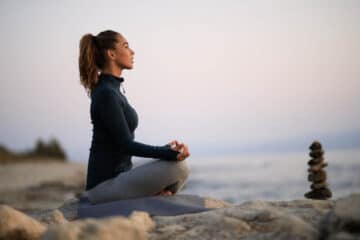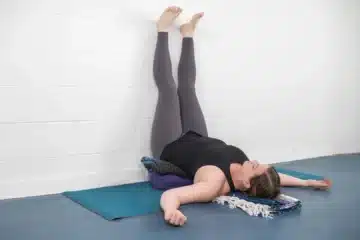To start a home yoga practice for beginners, find a quiet space and begin with easy poses. Focus on connecting breath with movement and be patient with your progress.
Embarking on a home yoga practice as a beginner can be both exciting and intimidating. Whether you are looking to cultivate more peace and tranquility in your life, increase flexibility and strength, or simply experience the many health benefits yoga has to offer, starting a home yoga practice can be a wonderful way to enhance your overall well-being.
By creating a comfortable and inviting space, learning the basics of yoga poses, and developing a consistent routine, you can establish a fulfilling and sustainable home yoga practice that suits your needs and lifestyle. Over time, you may find that your home yoga practice becomes an essential part of your daily routine, bringing harmony and balance to your life.

Credit: www.runnersloveyoga.com
Set Up Your Space
Setting up a dedicated space for your home yoga practice is crucial for creating a conducive environment that promotes focus, relaxation, and mindfulness. Here’s how you can set up your space to make it conducive for your yoga practice:
Designate A Dedicated Area
Choose an area in your home that is quiet and free from distractions. It could be a corner of your living room, a spare room, or even your backyard if weather permits. Having a designated space will create a sense of intention and commitment to your practice.
Clear Clutter And Create A Peaceful Atmosphere
Clearing clutter is essential for creating a tranquil environment that enables you to connect with your inner self during practice. Remove any unnecessary items, and consider adding elements that promote serenity such as plants, candles, or calming artwork. Ensure the lighting is soft and soothing to help set the right mood.

Credit: www.yogabasics.com
Start With Basic Poses
When starting a home yoga practice, it’s crucial to begin with foundational poses that help to build strength, flexibility, and balance. By focusing on basic poses first, beginners can establish a solid foundation for their yoga journey and gradually progress to more advanced postures.
Begin With Simple Standing Poses
Standing yoga poses are excellent for developing stability and grounding. They are perfect for beginners as they help in building strength and improving posture. Some basic standing poses to start with include Tadasana (Mountain Pose), Vrksasana (Tree Pose), and Utthita Trikonasana (Extended Triangle Pose).
Explore Seated Poses For Flexibility
Seated yoga poses are beneficial for increasing flexibility and enhancing relaxation. These poses are ideal for beginners to work on hip opening and lower body flexibility. Some simple seated poses to incorporate into your home practice are Sukhasana (Easy Pose), Baddha Konasana (Bound Angle Pose), and Paschimottanasana (Seated Forward Bend).
“` This HTML content is SEO-friendly and suited for a WordPress blog post, offering valuable information for beginners looking to begin a home yoga practice.
Establish A Routine
Consistency is key when it comes to starting a home yoga practice. By establishing a routine, you create a sense of structure and discipline that can help you stay committed to your practice. However, it’s important to approach this step mindfully and set realistic goals that fit your lifestyle and capabilities.
Choose A Consistent Time
To establish a routine, start by choosing a consistent time to practice yoga each day. This could be early in the morning before the demands of the day take over, during your lunch break, or in the evening to wind down. Consider your personal schedule, energy levels, and any other commitments you may have. By sticking to a specific time each day, you create a habit that becomes ingrained in your daily life.
Set Realistic Goals
Setting realistic goals is essential for maintaining a consistent home yoga practice. Rather than aiming for long and intense sessions right from the start, start small and build up gradually. It’s better to practice for 10 minutes every day than to push yourself too hard and eventually give up. Give yourself permission to start where you are and progress at your own pace. As you gain strength and flexibility, you can gradually increase the duration and intensity of your practice.
Use Online Resources
Starting a home yoga practice can be intimidating for beginners, but the good news is that there are plenty of online resources available to help you get started. Whether you prefer step-by-step video tutorials or guided practice through mobile apps, these resources can offer the support and guidance you need to establish a fulfilling yoga practice in the comfort of your own home.
Find Beginner-friendly Yoga Classes On Youtube
With countless yoga channels on YouTube, finding beginner-friendly classes has never been easier. You can simply search for “beginner yoga classes” and find a wide range of videos tailored specifically for beginners. These videos often provide clear instructions, modifications for different levels of flexibility, and gentle sequences to help you ease into your practice.
Additionally, many yoga instructors offer live-streamed classes on their YouTube channels, allowing you to practice in real-time and even interact with the instructor and fellow yogis through the comments section. This interactive element adds a sense of community and support, even in the virtual space.
Download Yoga Apps For Guided Practice
If you prefer a more personalized and guided experience, downloading yoga apps can be a great option. These apps provide a variety of guided yoga practices for different levels and goals, allowing you to customize your practice based on your preferences and needs.
Many yoga apps also offer features such as progress tracking, reminders, and curated playlists to keep you motivated and engaged. Whether you’re looking for a quick morning stretch or a full-length practice, these apps provide the flexibility and convenience to fit yoga into your schedule.
Listen To Your Body
Embark on your yoga journey with a home practice. Start slowly and tune into your body’s signals to avoid injury and build flexibility. Create a peaceful space and begin with beginner-friendly poses, gradually increasing the complexity as you progress.
Pay Attention To Physical Sensations
Modify Poses To Suit Your Abilities
Starting a home yoga practice can be an empowering way to improve your physical and mental well-being. When it comes to yoga, it’s crucial to listen to your body and honor its needs. By paying attention to physical sensations and modifying poses to suit your abilities, you can create a safe and effective practice that caters to your unique needs and goals.
Pay Attention To Physical Sensations
When practicing yoga at home, it’s essential to pay close attention to physical sensations. Tuning in to how your body feels during each pose can guide you to make mindful choices that promote strength and flexibility without risking injury. Notice any discomfort, pain, or strain that arises and modify or ease into the pose to find a comfortable edge. Remember that yoga is not about pushing yourself to the limit but rather finding a balance between effort and relaxation. Listen to your body’s cues, be gentle with yourself, and respect your limits.
Modify Poses To Suit Your Abilities
In a home yoga practice, it’s important to modify poses to suit your abilities. Every individual is unique, and what works for one person may not work for another. As a beginner, you might need to make adjustments to the poses to make them more accessible and avoid strain or injury. Consider using props such as blocks, blankets, or straps to support your practice and improve alignment. Don’t hesitate to explore variations of poses or use modifications that cater to your body’s needs. Remember that yoga is a journey, and progress comes with consistent practice and a willingness to adapt and grow at your own pace.
Stay Motivated
Starting a home yoga practice can be challenging, especially for beginners. It requires dedication, discipline, and most importantly, motivation. Without motivation, it’s easy to give up and let go of your yoga journey. Thankfully, there are a few strategies you can use to stay motivated, track your progress, and reward yourself for milestones. Let’s explore these strategies in more detail below!
Track Your Progress
Tracking your progress is essential to stay motivated in your home yoga practice. It allows you to see how far you’ve come and serves as a reminder of your achievements. Creating a tracking system can be as simple as keeping a journal or using a yoga app that allows you to record your practice and monitor your growth. By documenting your sessions, you’ll be able to track your improvements in flexibility, strength, and overall well-being. Plus, having a visual representation of your progress can boost your confidence and keep you motivated to continue.
Reward Yourself For Milestones
Rewarding yourself for reaching milestones is a great way to stay motivated and celebrate your achievements along the way. By setting attainable goals, such as practicing yoga three times a week or mastering a challenging pose, you give yourself something to strive for. Once you reach these milestones, treat yourself to something special. It could be a relaxing bubble bath, a new yoga mat, or even a day off to rest and rejuvenate. By acknowledging your progress and treating yourself, you create positive reinforcement and motivation to keep pushing yourself further.
Remember, establishing a home yoga practice takes time and effort. Some days you might feel less motivated than others, but by implementing these strategies of tracking your progress and rewarding yourself, you can stay motivated to continue your yoga journey. Stay committed, be kind to yourself, and embrace the transformative power of yoga in your own home.

Credit: www.nike.com
Frequently Asked Questions On How To Start A Home Yoga Practice For Beginners
How Can A Beginner Start Yoga At Home?
To start yoga at home, beginners can begin with online tutorials, find a quiet space, and invest in a good yoga mat. Start with simple poses, focus on breathing, and gradually increase practice time. Consistency is key for progress.
What Type Of Yoga Should A Beginner Start With?
As a beginner to yoga, it’s best to start with a gentle and beginner-friendly style like Hatha or Vinyasa. These styles focus on foundational poses, breathing techniques, and relaxation. They are accessible and help build strength, flexibility, and mindfulness. Remember to listen to your body and go at your own pace.
How Do You Sequence A Yoga Practice At Home?
To sequence a yoga practice at home, start with gentle warm-up poses to prepare your body. Then, progress to standing poses, balances, seated poses, backbends, and inversions. Include breathwork and meditation to enhance your practice. Remember to listen to your body and modify poses as needed.
How Do I Start Learning Yoga By Myself?
To start learning yoga by yourself, begin by setting a routine, finding reliable resources like books or online tutorials, creating a peaceful space, and practicing gradually to avoid injuries. Build a foundation with basic poses, focus on proper breathing techniques, and listen to your body’s limits.
Enjoy the journey!
Conclusion
Starting a home yoga practice may seem intimidating at first, but with these helpful tips, you can confidently embark on your journey. Remember to start slowly, listen to your body, and set realistic goals. Consistency is key, so make sure to carve out dedicated time for your practice.
With time and patience, you will witness the transformative power of yoga in your life. Embrace the flexibility, peace, and mindfulness that a home yoga practice can bring to your daily routine. Namaste.



